Lot details China, 11th-10th century BC. Well cast with the compressed body resting on a tall splayed foot, decorated below the gently everted rim with a band of stylized mythical birds, the two pairs on the main sides centered by an animal mask cast in high relief, the other two centered on the horned animal heads that surmount the handles, all above a bowstring band, the foot with a geometric band. The beast handles are neatly incised and set with pendent tabs. Provenance: The MacLean Collection of Asian Art Museum, acquired 1996 in Hong Kong and deaccessioned in 2022. The MacLean Collection has been formed over the last fifty years by Barry MacLean, a businessman from Chicago, who began to collect in the early 1970s. Over time, he made many trips to Asia for business, and began to narrow his focus to ancient bronzes from China and their archaistic counterparts from later dynasties. The MacLean Collection of Asian Art is housed in a museum which was designed by Larry Booth and completed in 2003. Since 2004, the museum has published seven books, held thirteen exhibitions, lent objects to many other museums, and awarded a dozen fellowships to train future specialists and enthusiasts. Published: Richard A. Pegg and Zhang Lidong, The MacLean Collection: Chinese Ritual Bronzes, Chicago, 2010, pl. 19. Condition: Very good condition, commensurate with age. The vessel is slightly leaning and has some old wear as well as minor casting flaws, minuscule nicks, and small dents. The lower body has two small fills, invisible to the naked eye, but precisely detected on the five X-ray images provided (available in the online catalog at www.zacke.at or via e-mail upon request). Spectacular, naturally grown patina overall with several layers of malachite encrustation and small areas of azurite and cuprite. The crisply cast decorations are extremely well-preserved, which makes this one of the most attractive examples of its kind. In such pristine condition, it must be considered exceedingly rare. Weight: 2,878 g Dimensions: Width 28 cm (across handles) Gui were used during ritual ceremonies for storing cooked rice or millet. While this vessel shape first appeared in the Erligang phase, they were not widely produced and examples from this period are rare. The form increased in popularity from the early Western Zhou dynasty onwards, and numerous variations of the original shape also began to appear. The present vessel, with its rounded body, everted rim and animal-head handles represents the most popular form. Literature comparison: A related gui unearthed from Xi’an, Shaanxi province, now in the National Museum of China, Beijing, is illustrated in Zhongguo qingtongqi quanji [Complete collection of Chinese archaic bronzes], vol. 5, Beijing, 1996, pl. 61. Another from the collection of T. Yamamoto is published in Sueji Umehara, Nihon Schūcho Shina kodō Seikwa/ Selected Relics of Ancient Chinese Bronzes from Collections in Japan, vol. 2, Osaka, 1960, pl. 107. Jessica Rawson notes in Western Zhou Ritual Bronzes from the Arthur M. Sackler Collections, Washington D.C., 1990, p. 415, that these types of gui vessels are more common in early Western Zhou, and lists five other examples, including one from Liaoning Kezuo Shanwanzi illustrated in Wenwu, 1977.12, p. 23-33, fig. 55. Compare also a related bronze gui, dated to the Western Zhou dynasty, in the collection of the British Museum, museum number 1955,0519.2. Finally compare a related bronze gui, dated to the Western Zhou dynasty, late 11th to early 10th century, in the collection of the Freer Gallery of Art at the National Museum of Asian Art, Smithsonian Institution, accession number F1924.14a-b. Auction result comparison: Type: Related Auction: Sotheby’s New York, 23 September 2020, lot 570 Price: USD 478,800 or approx. EUR 540,500 converted and adjusted for inflation at the time of writing Description: An important archaic bronze ritual food vessel (gui), Western Zhou dynasty Expert remark: Comp
Lot details China, 11th-10th century BC. Well cast with the compressed body resting on a tall splayed foot, decorated below the gently everted rim with a band of stylized mythical birds, the two pairs on the main sides centered by an animal mask cast in high relief, the other two centered on the horned animal heads that surmount the handles, all above a bowstring band, the foot with a geometric band. The beast handles are neatly incised and set with pendent tabs. Provenance: The MacLean Collection of Asian Art Museum, acquired 1996 in Hong Kong and deaccessioned in 2022. The MacLean Collection has been formed over the last fifty years by Barry MacLean, a businessman from Chicago, who began to collect in the early 1970s. Over time, he made many trips to Asia for business, and began to narrow his focus to ancient bronzes from China and their archaistic counterparts from later dynasties. The MacLean Collection of Asian Art is housed in a museum which was designed by Larry Booth and completed in 2003. Since 2004, the museum has published seven books, held thirteen exhibitions, lent objects to many other museums, and awarded a dozen fellowships to train future specialists and enthusiasts. Published: Richard A. Pegg and Zhang Lidong, The MacLean Collection: Chinese Ritual Bronzes, Chicago, 2010, pl. 19. Condition: Very good condition, commensurate with age. The vessel is slightly leaning and has some old wear as well as minor casting flaws, minuscule nicks, and small dents. The lower body has two small fills, invisible to the naked eye, but precisely detected on the five X-ray images provided (available in the online catalog at www.zacke.at or via e-mail upon request). Spectacular, naturally grown patina overall with several layers of malachite encrustation and small areas of azurite and cuprite. The crisply cast decorations are extremely well-preserved, which makes this one of the most attractive examples of its kind. In such pristine condition, it must be considered exceedingly rare. Weight: 2,878 g Dimensions: Width 28 cm (across handles) Gui were used during ritual ceremonies for storing cooked rice or millet. While this vessel shape first appeared in the Erligang phase, they were not widely produced and examples from this period are rare. The form increased in popularity from the early Western Zhou dynasty onwards, and numerous variations of the original shape also began to appear. The present vessel, with its rounded body, everted rim and animal-head handles represents the most popular form. Literature comparison: A related gui unearthed from Xi’an, Shaanxi province, now in the National Museum of China, Beijing, is illustrated in Zhongguo qingtongqi quanji [Complete collection of Chinese archaic bronzes], vol. 5, Beijing, 1996, pl. 61. Another from the collection of T. Yamamoto is published in Sueji Umehara, Nihon Schūcho Shina kodō Seikwa/ Selected Relics of Ancient Chinese Bronzes from Collections in Japan, vol. 2, Osaka, 1960, pl. 107. Jessica Rawson notes in Western Zhou Ritual Bronzes from the Arthur M. Sackler Collections, Washington D.C., 1990, p. 415, that these types of gui vessels are more common in early Western Zhou, and lists five other examples, including one from Liaoning Kezuo Shanwanzi illustrated in Wenwu, 1977.12, p. 23-33, fig. 55. Compare also a related bronze gui, dated to the Western Zhou dynasty, in the collection of the British Museum, museum number 1955,0519.2. Finally compare a related bronze gui, dated to the Western Zhou dynasty, late 11th to early 10th century, in the collection of the Freer Gallery of Art at the National Museum of Asian Art, Smithsonian Institution, accession number F1924.14a-b. Auction result comparison: Type: Related Auction: Sotheby’s New York, 23 September 2020, lot 570 Price: USD 478,800 or approx. EUR 540,500 converted and adjusted for inflation at the time of writing Description: An important archaic bronze ritual food vessel (gui), Western Zhou dynasty Expert remark: Comp

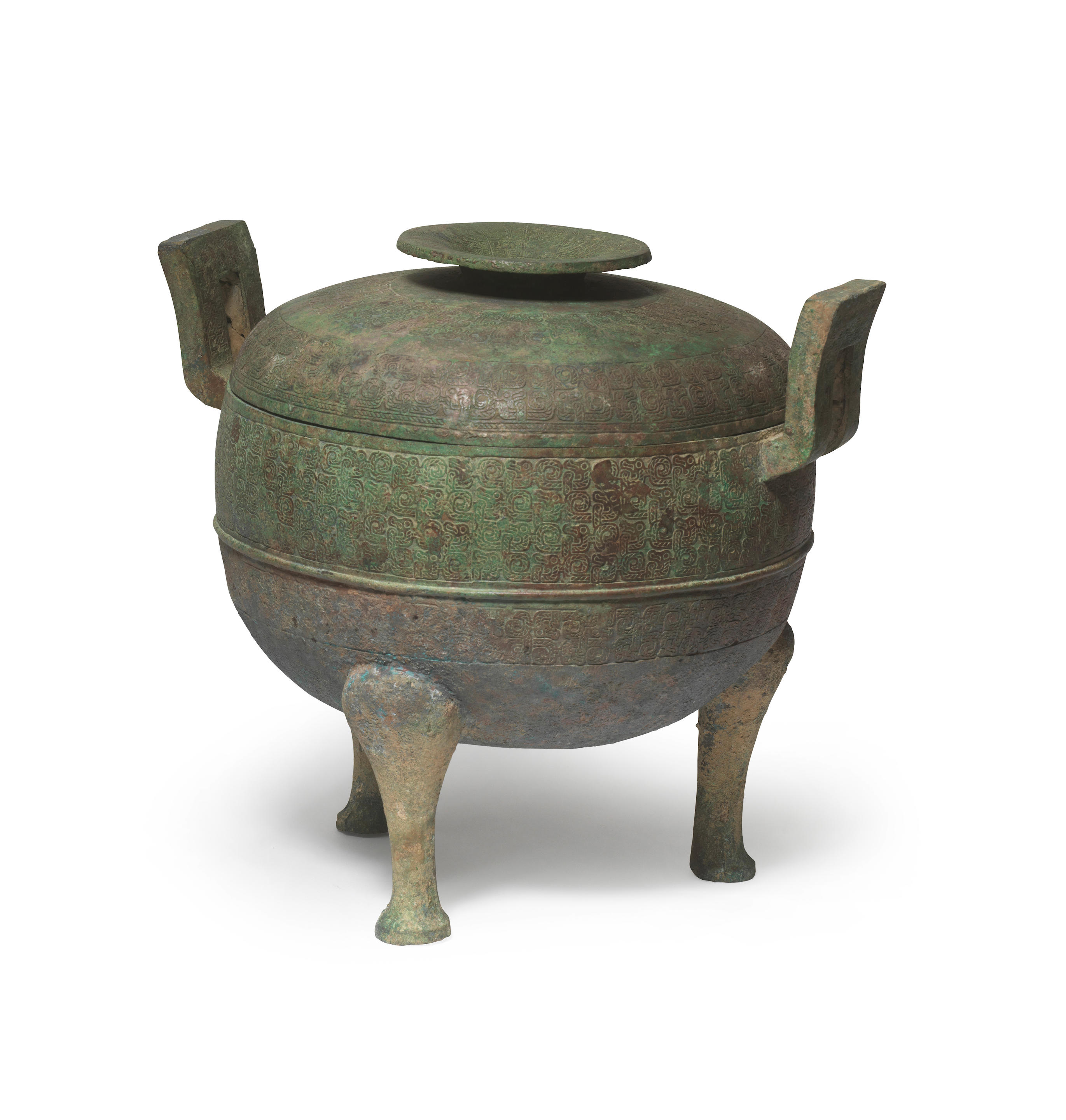

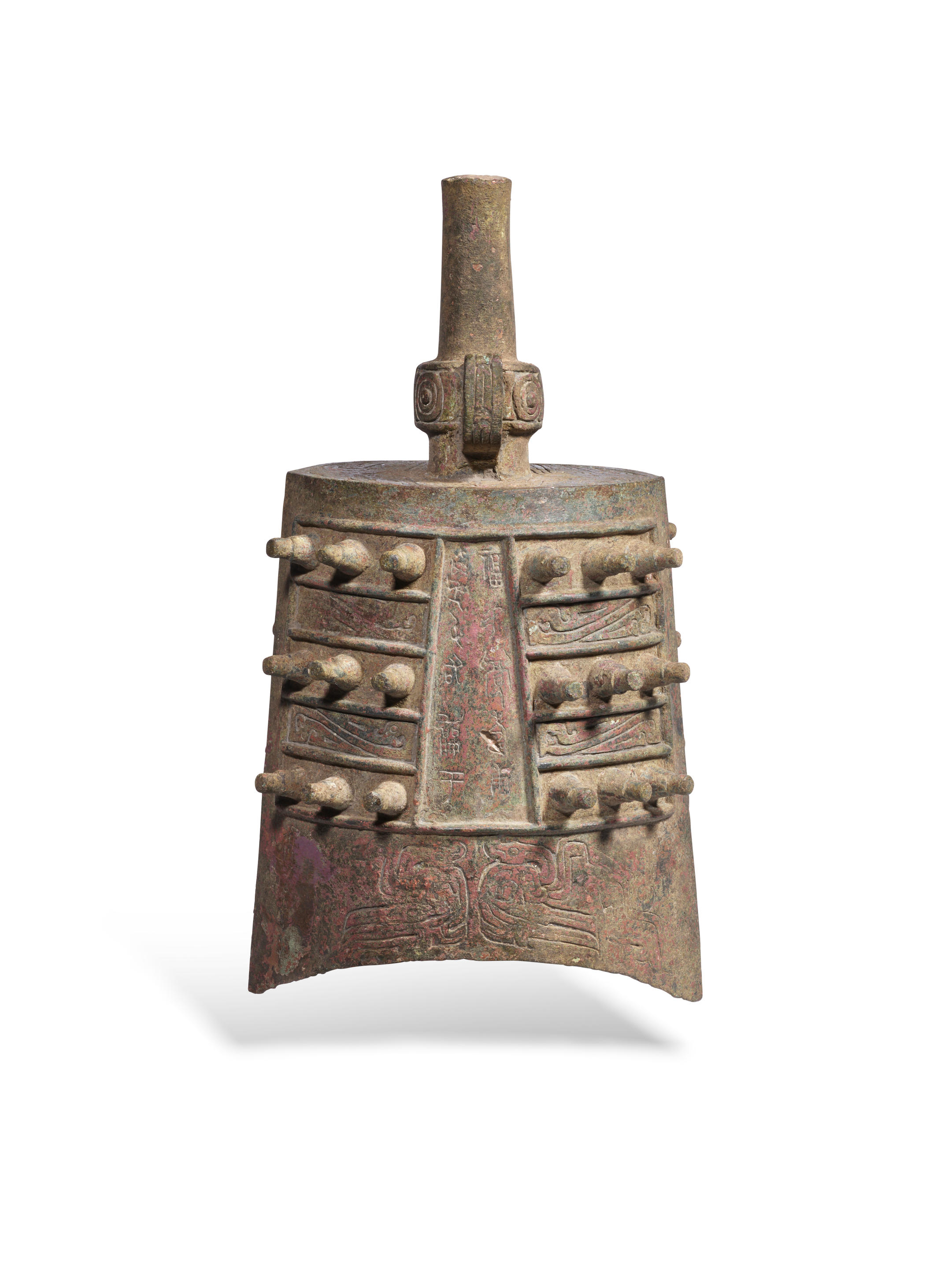
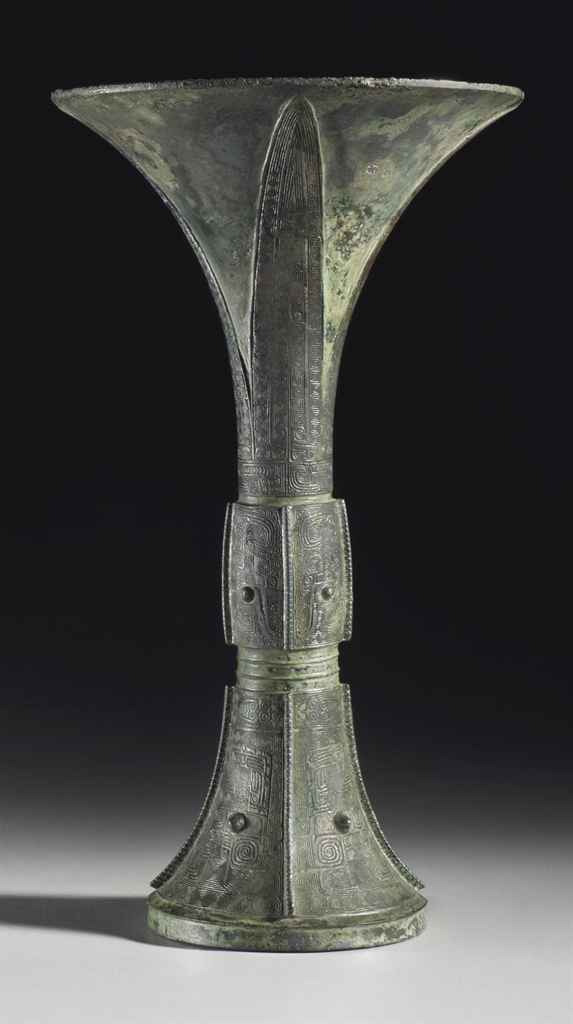
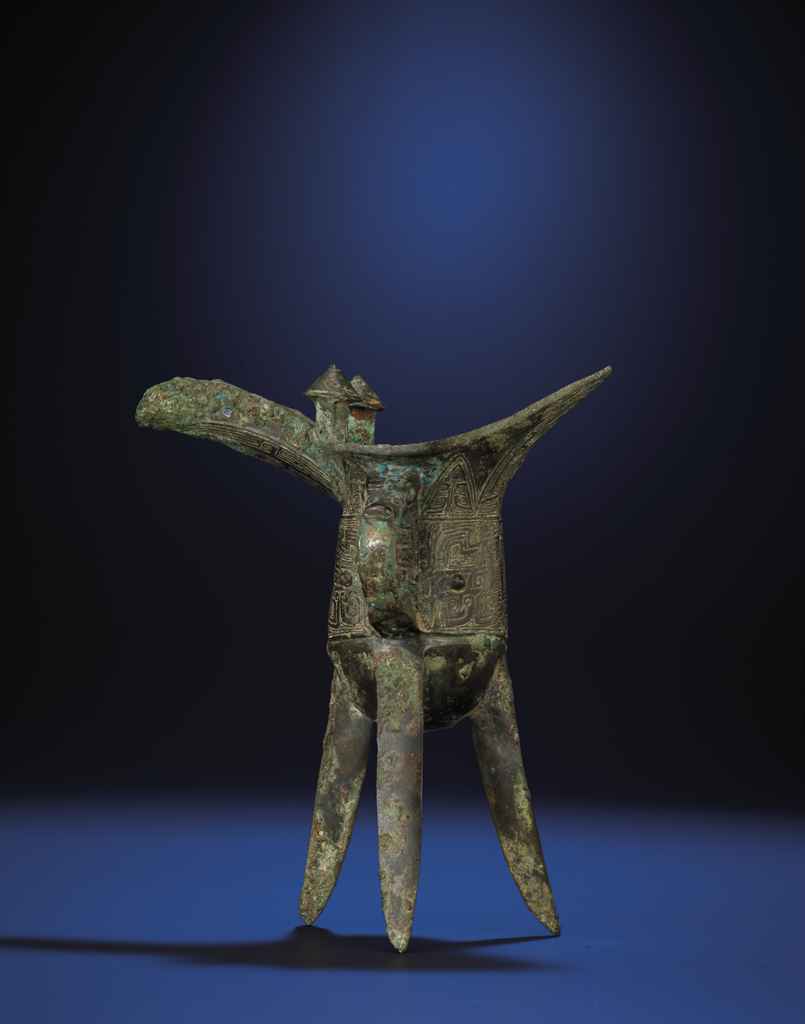
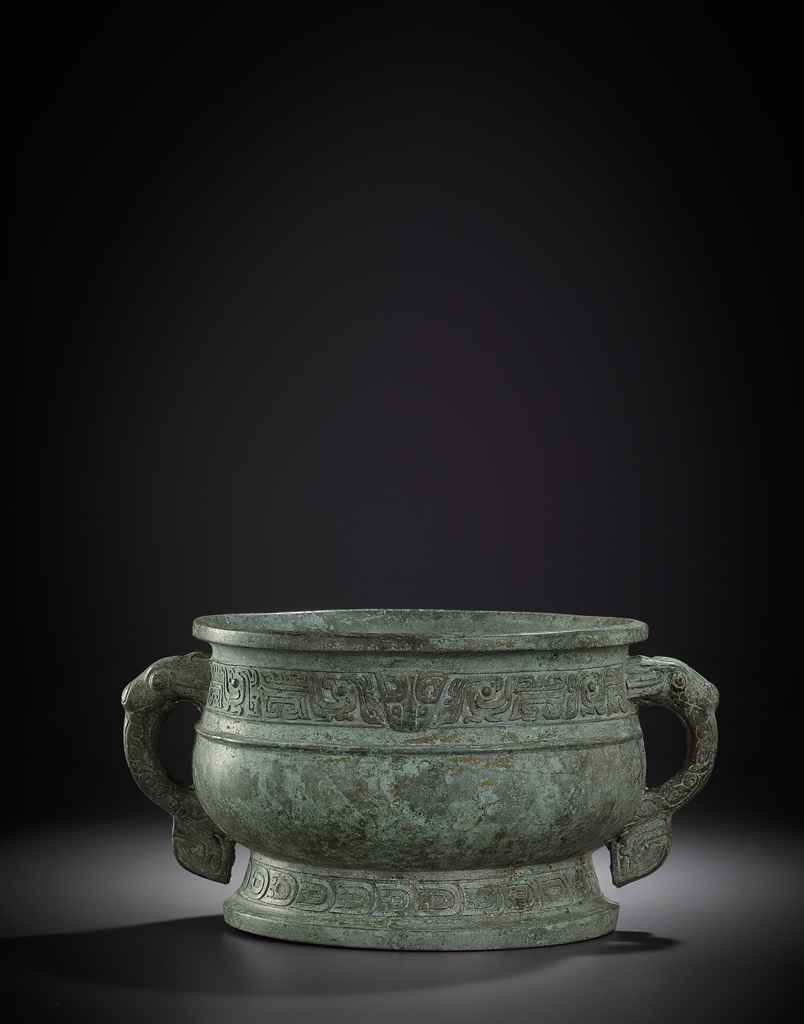
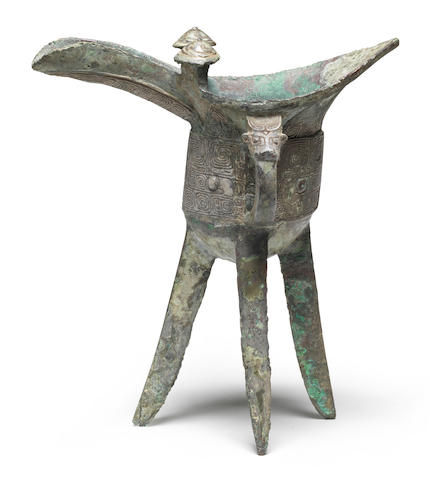
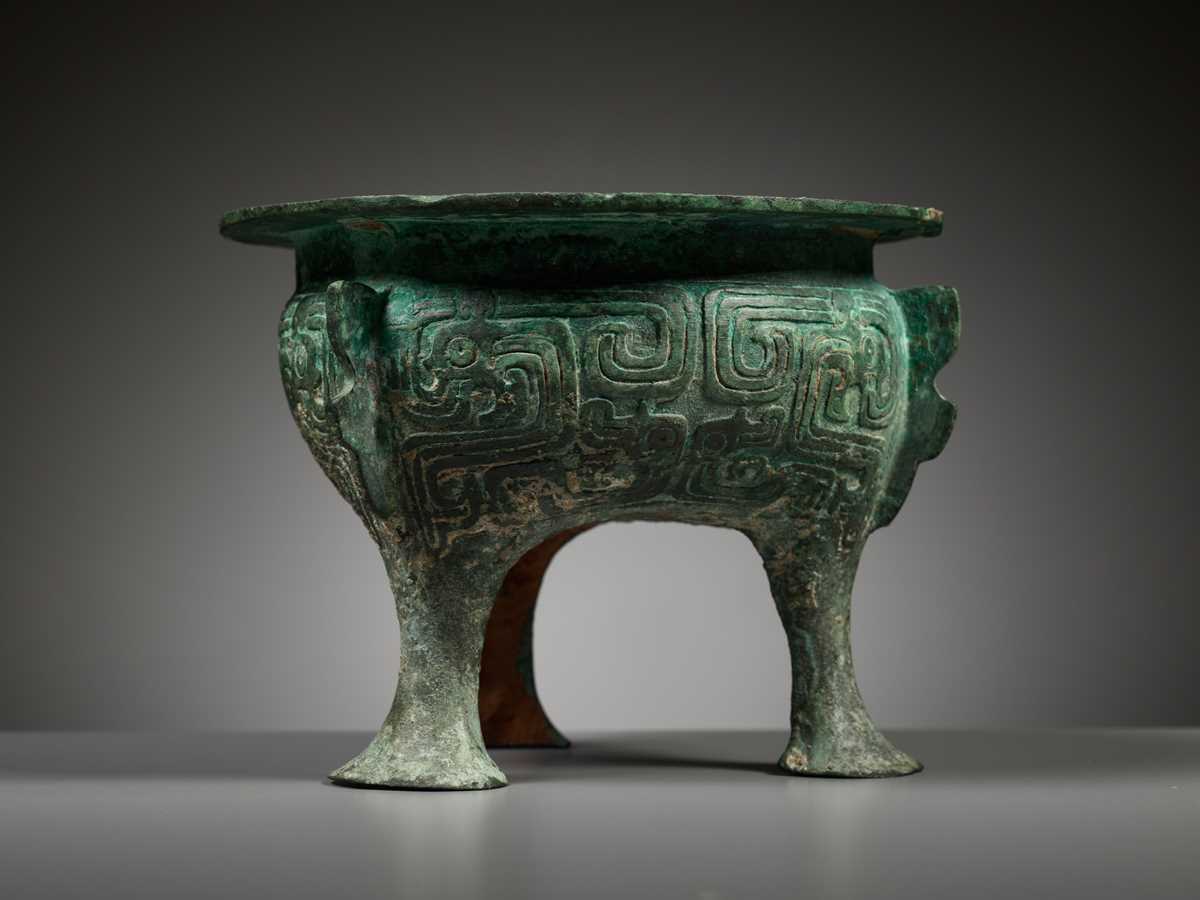
.jpg)
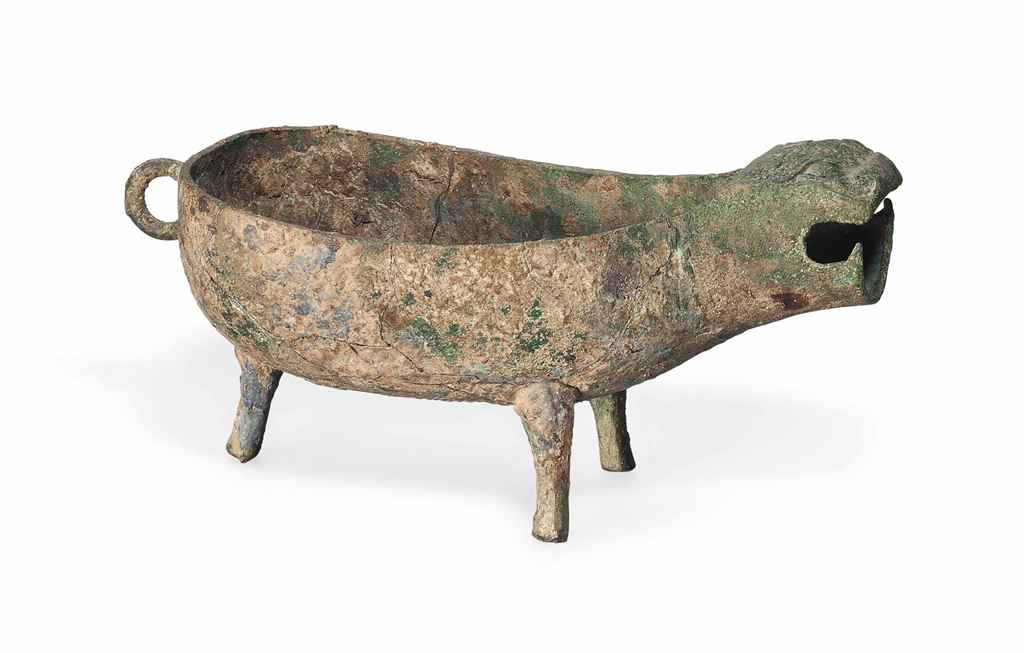
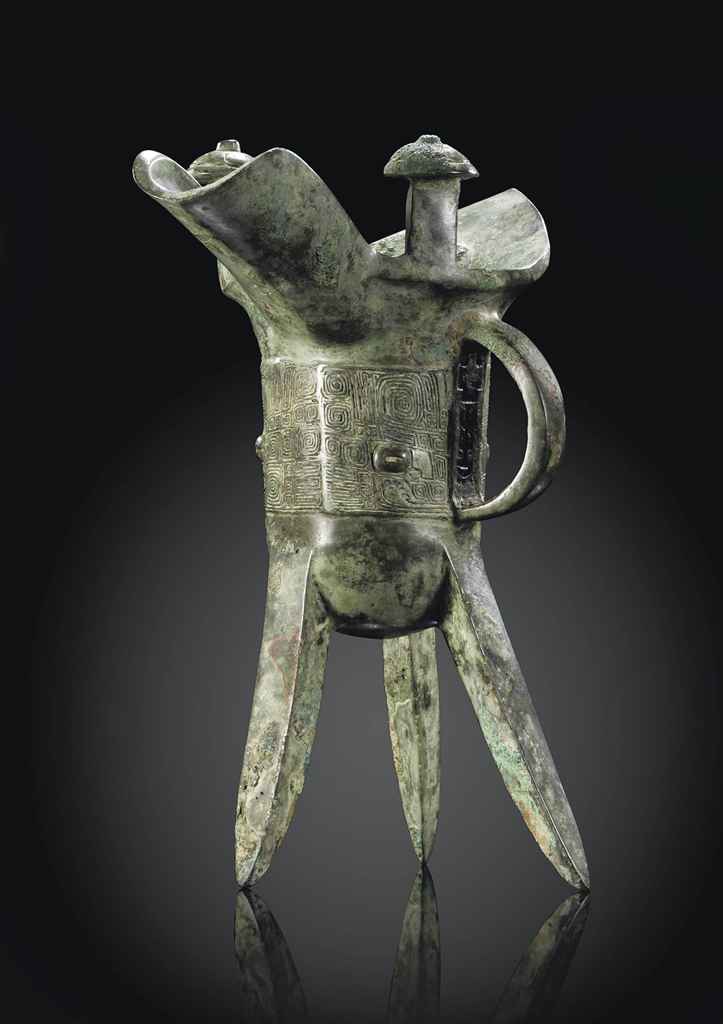
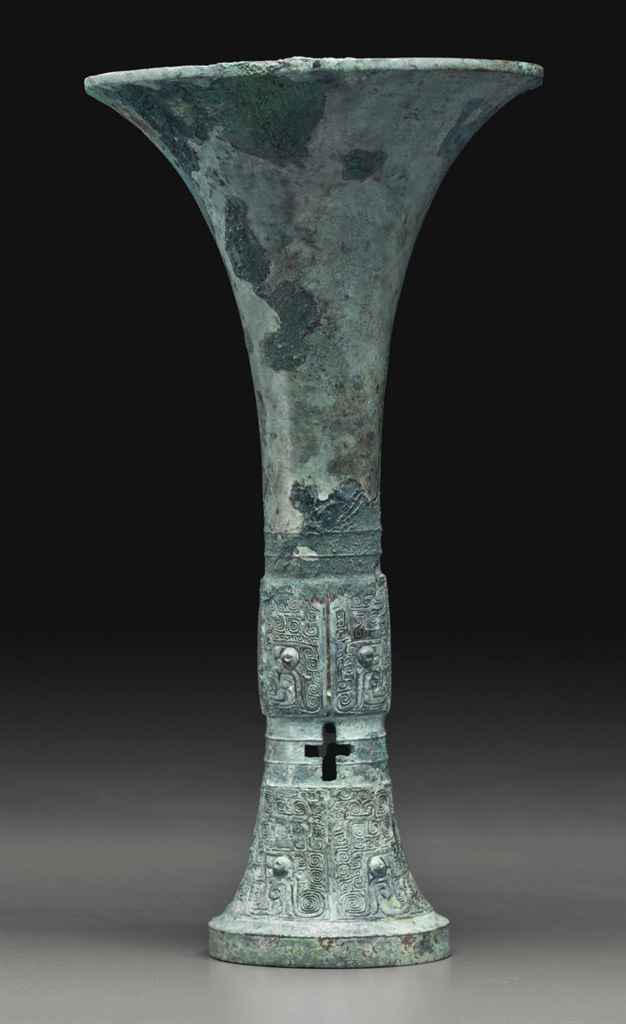
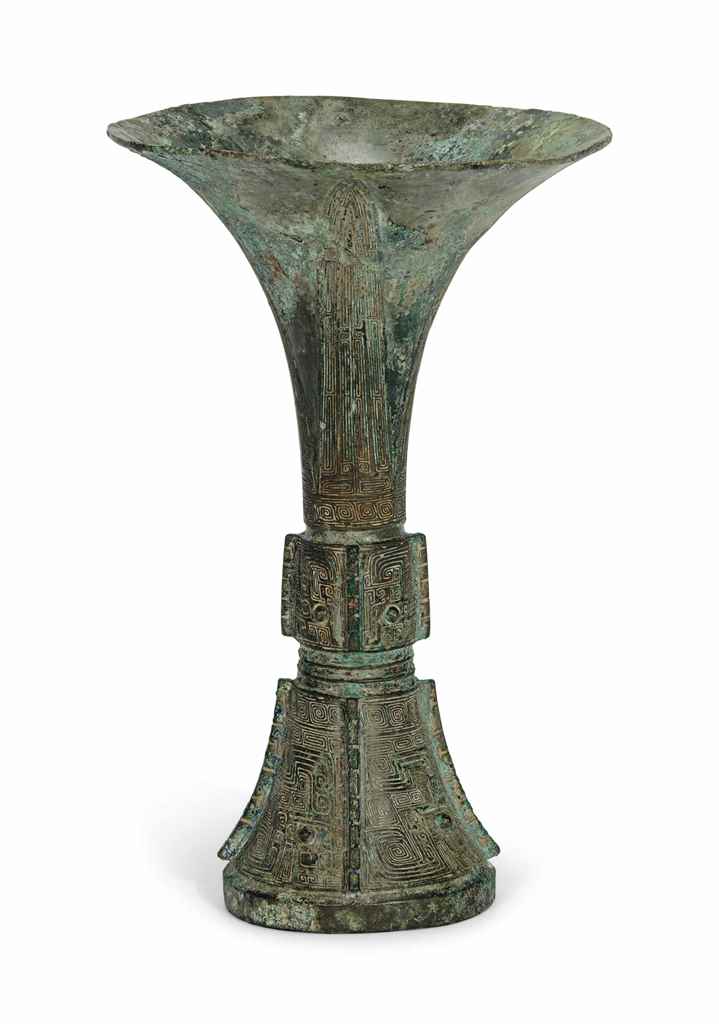

Testen Sie LotSearch und seine Premium-Features 7 Tage - ohne Kosten!
Lassen Sie sich automatisch über neue Objekte in kommenden Auktionen benachrichtigen.
Suchauftrag anlegen